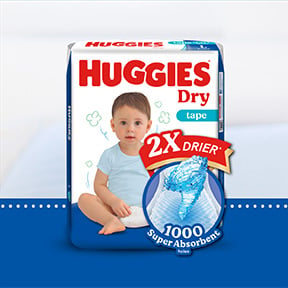10 simple ideas to train your baby's brain
Play these games with your baby to help them learn and grow.
1. Baby Show And Tell
Everything is fascinating to your baby, so introduce them to their world with this simple activity.
Hold up an object in front of your child and describe what it is. Be sure to add in descriptive adjectives. You could say, "This is an apple. It is red and round." Use fruit, kitchenware or anything you have around the house. You'll be surprised at how quickly your little one begins to recognise objects in the months to come.
2. Texture Play
Let your baby learn through their sense of touch. Gather objects from around the house that have different textures, such as a rubber duck, a stuffed animal, a plastic place mat, a piece of satin and a clean piece of fine sandpaper. Make sure none of the objects have sharp edges, are too cold or hot, or have loose strings.
Place the objects on your baby’s play mat and sitting with your baby, describe each texture using words such as sticky, cool, soft, slippery, smooth or rough and let your baby play with each object.
3. Sniff A Whiff
For the first few months of their life, most of your baby’s stimulations are visual. But from 4–6 months, their sense of smell starts to develop, so start introducing your baby to different smells.
Select several items from around the house, such as an apple, a bar of soap, your favourite perfume and Daddy's shaving cream. Place each item, one at a time, under your baby’s nose, while saying, "Smell the apple. What does the soap smell like? Do you smell the perfume?"
If your baby makes an offended face, don't offer him that scent again for a while.
4. Where’s Baby’s Body?
This twist on the classic peek-a-boo helps your baby learn body parts and develop a greater awareness of their body.
Using a small colourful cloth, cover your baby's head and say, "Where's baby's head?" After a few seconds, lift off the cloth and say, "There it is!" Repeat with different parts, working your way down your baby's body, ending with the feet. Test your child by asking where a certain body part is after you have practiced this game several times.
5. Hiding Hands
Help your baby reinforce their understanding that things exist even if they can’t see them with this guessing game.
Show your baby that you’re hiding a small toy or object in your hand. Hold both hands closed in front of your baby and ask them to guess which hand the object is in. You may have to guide your baby at first or demonstrate with an older sibling.
Don’t forget to express excitement and enthusiasm whether your baby gets it right or wrong.
6. Peek-A-Blue
Another game to play when your baby starts to understand that things exist even when they can’t see them, this one also helps your little one learn their colours.
Tape brightly coloured construction paper to white pieces of paper. Present your baby with the white side of the paper first. Then turn it around to reveal the colour (e.g. blue) while saying, "Peek-a-blue!” (Or red. Or green. Or yellow).
7. Simple Directions
Practicing simple directions, will help your baby develop their cognitive thinking.
Pick three very different toys and place them on the play mat between you and your baby. Say, “I am going to pick up the ball.” Then pick it up. Say to your baby, “Can you pick up the ball?” and encourage them to pick up the ball. Show them again if they have trouble.
Give your baby another direction, e.g. “Give the doll a kiss”. You give the doll a kiss and let your baby do the same.
Try a range of different directions, such as picking things up, putting things down and bringing you things. Always demonstrate first, then let your baby do it by themselves. Repeat the same direction 2–3 times to reinforce the words and actions. And of course, give your baby lots of praise each time they succeed.
8. Memory Games
Help your child develop their memory by playing these little games with them.
Place 3-4 objects in front of your child and give them a few minutes to memorise them. Ask them to close their eyes and remove one of the objects. Get them to tell you which one has been removed.
You can also rearrange the order the objects are in and ask your child to put them back in their original place. Vary the colours and shapes of the objects each day.
9. Hide-And-Seek Shapes
Make learning about shapes and colours fun with a special version of hide and seek.
Cut out basic shapes (triangles, squares, circles, and rectangles) using different colours of construction paper. Or use plastic toy shapes if you have them.
Hide the shapes in easy-to-find spots and ask your child to find one shape at a time. Help your child search for the shape by saying, "Is the red triangle under the bed? Is the blue square on the chair? Is the green circle under the table?" These questions will reinforce your child's comprehension of colours and shapes, as well as the words on, off, over, and under.
10. Quiet Time
From the time they are born, your child is bombarded with stimulation. But children need quiet time to think and learn about what’s around them. It’s also important for them to learn how to sit quietly. So start introducing quiet time into your baby’s routine by setting aside 15 to 30 minutes for your child to just be quiet.
Read a favourite book in a rocking chair. Play a CD of soft songs. Lay with your baby on a blanket and watch the ceiling fan. Look at your baby in the eyes and just smile at each other for a while. Make sure there's minimal talking, singing or humming. The key is to hear the quiet
Do you know that an average baby will need 1057 nappy changes in the first 6 months? Get exclusive promotions and free diaper samples by joining the Huggies Club now!
"The information contained in this site is for informational purposes only and is not intended to be a substitute for professional medical advice, diagnosis or treatment. Always seek the advice of your doctor or other qualified healthcare provider with any questions you may have regarding a medical condition. You should never delay seeking medical advice, disregard medical advice or discontinue medical treatment because of information on this site. To the extent permitted by law, Kimberly-Clark excludes liability or responsibility for claims, errors or omissions on this site, and may amend material at any time without notice."













